Everyone laughed when I first released the “fish” onto the ground and they saw they would be fishing for sweets!
During the first round, everyone excitedly went for as much as they could catch, like kids in a candy store, but soon their whole “fish population” had collapsed…
Playing this game with fishers from southwest Madagascar was one of my first experiences as Blue Ventures Fisheries Programme Manager. In the run up to the general assembly of the Velondriake Locally Managed Marine Area (LMMA) management association, several members had requested a focus on fisheries management. I was invited to share a fisheries management game that I learnt during my studies at the University of Tromsø in chilly Norway.
This annual meeting gathers community leaders from the 32 villages within the LMMA to assess activities over the past year, discuss perspectives, and plan for the future. After the presentation of the year’s fisheries data, including analysis of the results of Velondriake’s temporary fisheries closures, I stepped forward to introduce the game.
I divided the association members into four teams, and equipped each person with “fishing gear” – a long stick with a paper box attached to the end. For the “fish”, I used four different sweets to represent four commonly caught fish species of differing commercial value – mackerel (highest value), grouper (high value), parrotfish (medium value), and damselfish (low value). There were deliberately fewer high value sweets than the lower value ones, to reflect the natural differences in abundance of these species in the marine environment.
The game is designed to simulate an open-access fishery – one where everyone can catch as much fish as they want – and the consequently negative effects on fish stocks if fishers do not cooperate. If they are fished carefully, the high-value fish species are given a chance to reproduce, but if they are fished intensively, it does not take much time for the whole population to disappear. However, there are no set rules in the game governing fishing behaviour, it’s a figurative free-for-all!
The game has three rounds, but the first time the association teams played they were completely fished out by the end of round two. There had been a competitive rush to grab as much as possible, and it was game over before they knew it.
I allowed the teams a few minutes of open discussion about strategies for their next attempt, and then we played again. This time, the low-value highly reproductive fish species survived, but the high-value species were still extinct by the end of the game.
Having experienced the shock of complete population collapse in the first attempt, the teams worked together and communicated much more effectively during the second game, but their strategy only accounted for the three rounds of the game. There was a collective disappointment that they’d still not managed to save the high value species, and a realisation that they would have been in trouble if the game had more than three rounds. These realisations sparked debate about the fish stocks within the Velondriake LMMA.
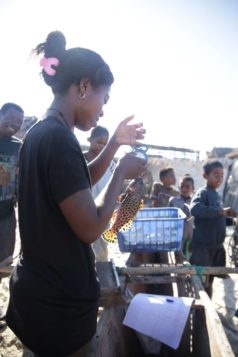
A community data collector in Andavadoaka
“How do we know how much we can fish?” was the primary question on everyone’s lips, until one of the community leaders stepped forward saying: “This is why we have data collectors at our fishing sites, so that we can find out how many fish are left in the sea.”
“You can only estimate the amount of fish from the catch data,” I answered, “but the more data that are collected, the more accurate the estimation, and the more informed your fisheries management will be. You’ll also be able to see whether your management is having a positive effect.”
This discussion flowed into preexisting and ongoing conversations about the management of temporary octopus fishery closures – the association have recently decided to close their whole octopus fishing site for a month, when previously they had only closed 20% of it. There were also fascinating discussions about creating artificial octopus habitats, and how fishers can better facilitate and encourage the work of the community data collectors.
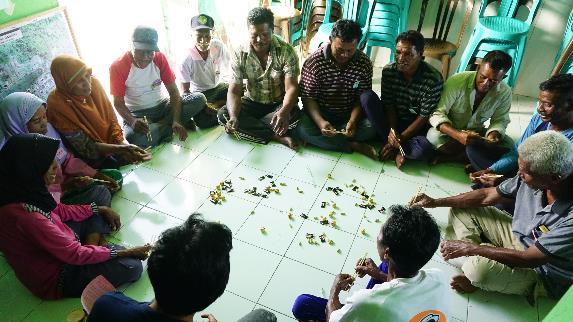
An adaptation of the game being played in Indonesia
This is only the second time I’ve used this game, and the first time with fishers, so I was really thrilled at the way it inspired discussion. It turned out to be a successful way of engaging community leaders with the principles of fisheries management, and I hope that it will long be remembered in the Velondriake association.
One of the advantages of this game is its adaptability, and I know that locally relevant variations are being played by fishing communities in Indonesia and elsewhere too. This makes me excited, and I would love to spend some time developing my own version with more complex management decision making to increase its potential impact on fisheries management in southwest Madagascar.
Find out more about our work rebuilding fisheries


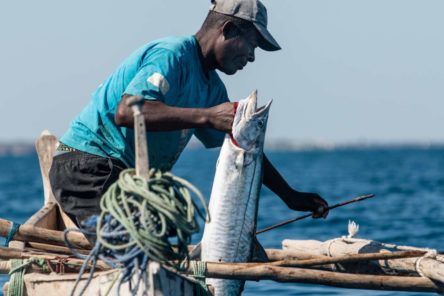
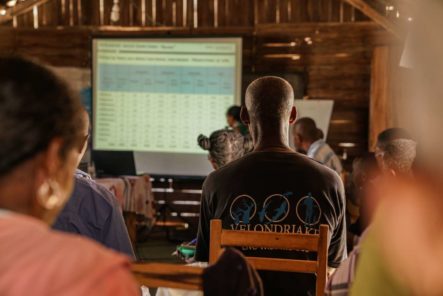
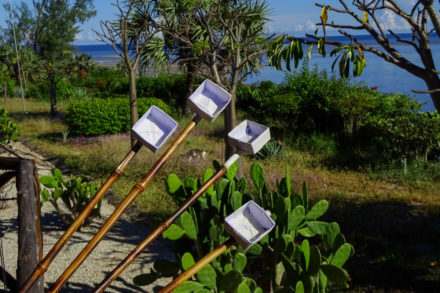
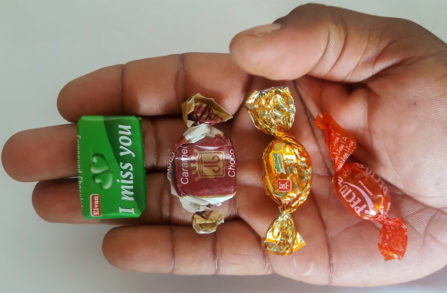
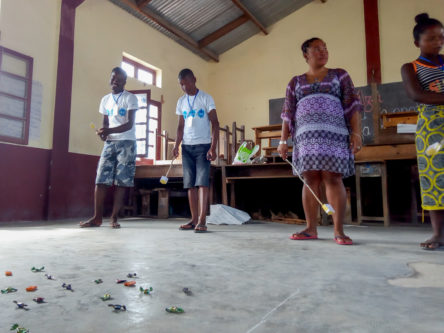
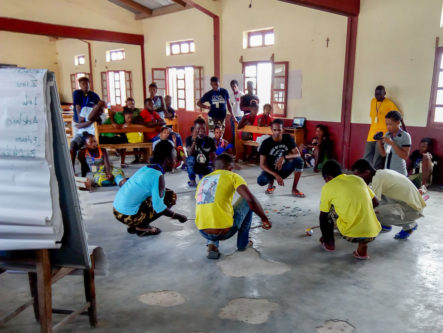
Interesting game. That makes people think how important is the management of the fisheries for its suistainablity
i’ve been doing a similar game with kids (and later fishermen) since 2012. Instead of sweets, i’d use goldfish crackers (or M&Ms candies sometimes). We’ve even been able to give kids “jobs” as observers, data collectors, managers, scientists, and fishermen and then developed a quick and dirty stock assessment model that can model the stock status between rounds after which the groups have to come up with management decisions (gear prohibitions, area prohibitions, seasonal closures, etc) and test to see if that worked.
Hope you got to work on it some more and that your communities are understanding it better!